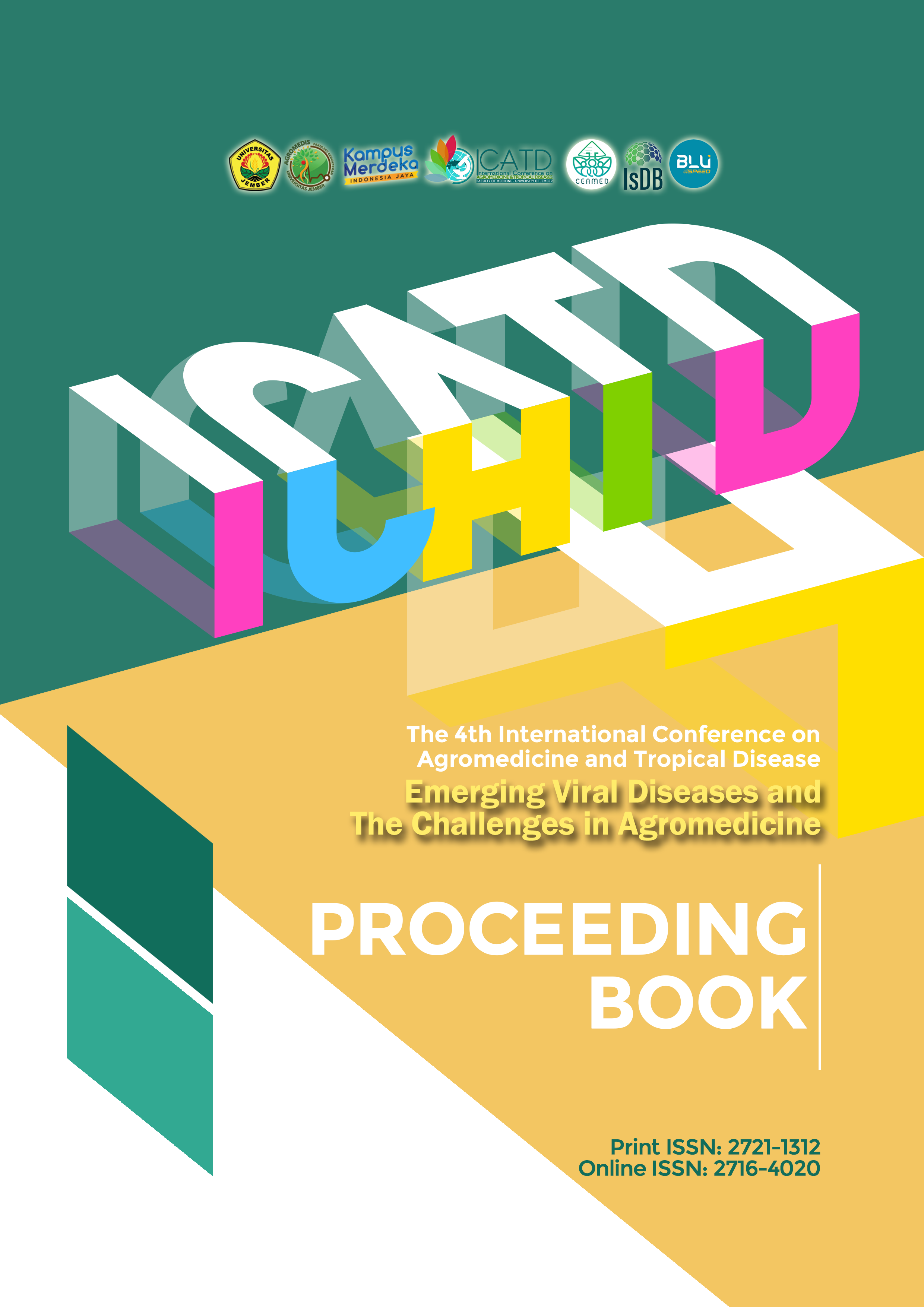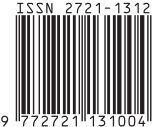NEEM GUM (Azadirachta indica) PREVENT OXYDATIVE STRESS IN DIAZINON-INDUCED RAT
Abstract
Diazinon, an ogranphosphate pesticides can cause tissue damage due to oxidative stress. One can be measure by its metabolit such as Malondialdehyde (MDA). The high level of plasma MDA can be an indication of tissue damage that need treatment. One of oxidative stress prevention and treatment were using antioxidant. Neem Gum, a sap from neem tree containt polischaride that has potential effect as an antioxidant. This study goal was to uncover the potention of Neem Gum as an antioxidant to prevent oxidative stress caused by Diazinon. A total of 30 wistar rats were divided into 3 groups: the normal group (KN) was given corn oil, the negative control (KD) was induced by diazinon 100 mg/kgBW, and the treatment group (KP) was given Neem Gum solution at a dose of 30 g/kgBW, after an induction Diazinon 100 mg/kg body weight. After 8 days of treatment plasma levels of MDA were measure. The Average plasma levels of MDA of KN group was 0,166 nmol/ml, KD was 0,172 nmol/ml and KP was 0,121 nmol/ml. Statistical analisys using one way anova showed significant diference between groups (p<0,05). Neem Gum has prevention effect from oxidative stress caused by Diazinon.

This work is licensed under a Creative Commons Attribution-ShareAlike 4.0 International License.





